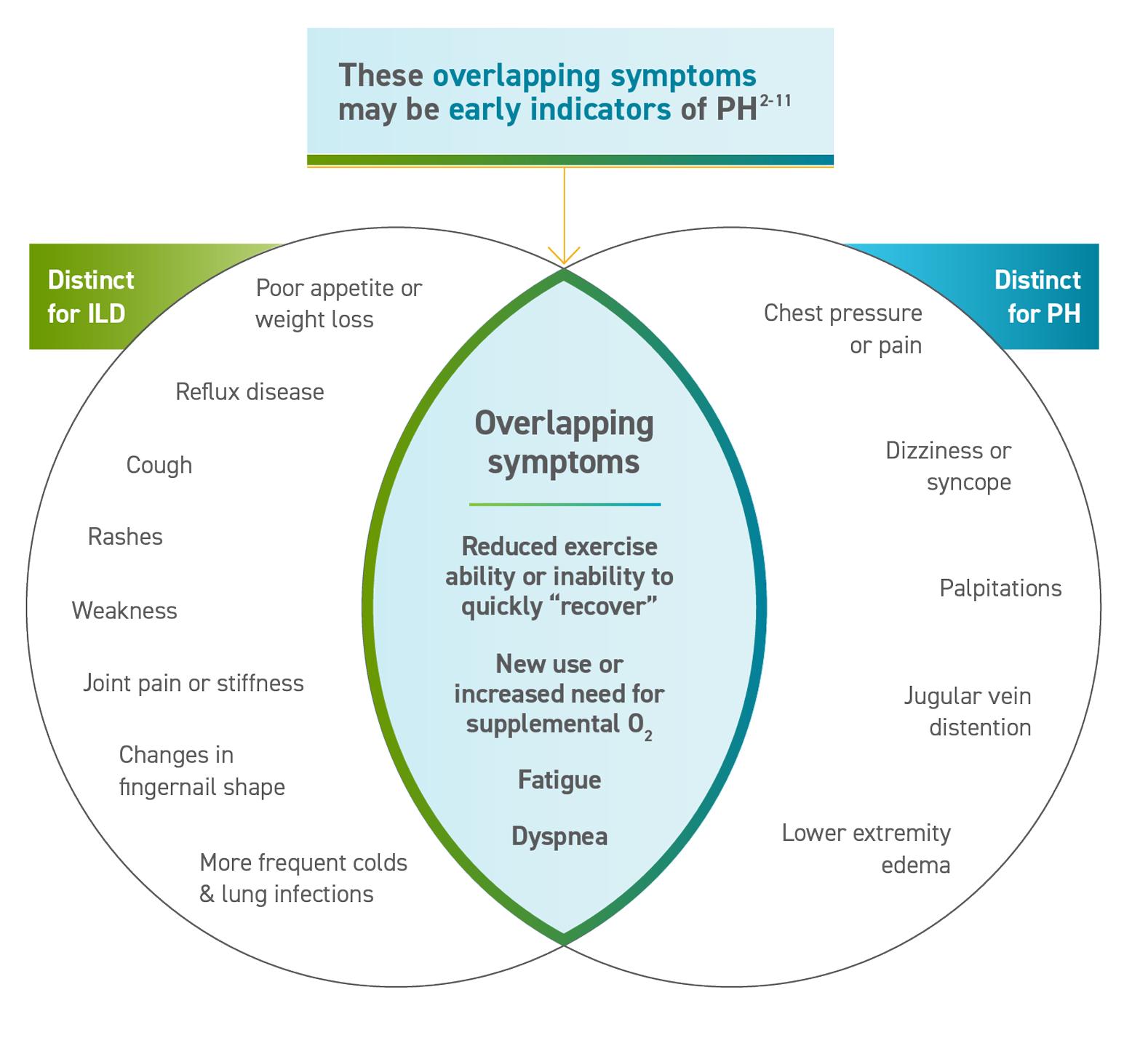Early Detection of Pulmonary Hypertension
Are your patients' ILD symptoms getting worse, or is it PH?2-5

Ask your patients about any recent deterioration in symptoms.2-5
To catch PH early, talk to your patients about any changes they experience2,12
Questions to consider asking your patients:

What has changed since your last appointment?

Are you able to walk as far as you used to without resting?

What does a typical day look like for you? How is your routine different since our last appointment?

Are you not doing some things you used to?
For example:
– Do you walk your dog? How far are you able to walk together? Has that become a more difficult activity?
– Can you walk to a store from the parking lot? Or do you need to be dropped off at the front?
PH is often not diagnosed until significant right heart dysfunction has developed2-4
Early PH symptoms overlap with symptoms of ILD progression2-4:
Increased shortness of breath
Fatigue
Reduced ability to be active
Later, more distinct PH signs indicate significant right heart dysfunction4,5:
Jugular vein distention
Peripheral edema
Early discussions with your patients about PH may help facilitate earlier detection.2,12 Start the conversation today.
ILD=interstitial lung disease; PH=pulmonary hypertension.
The information contained in this section of the site is clinical in nature and specifically created for healthcare professionals. If you are not a US healthcare professional, please click CLOSE to return to the consumer section of the site.

